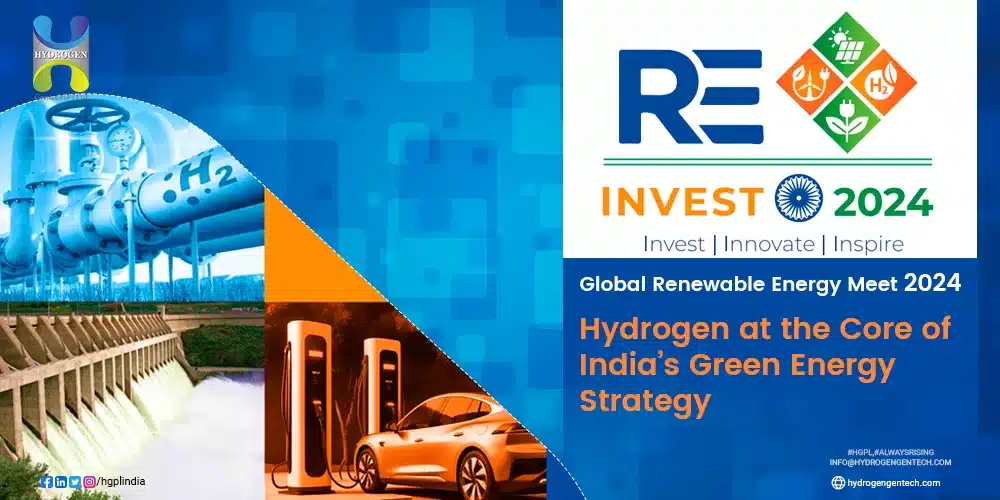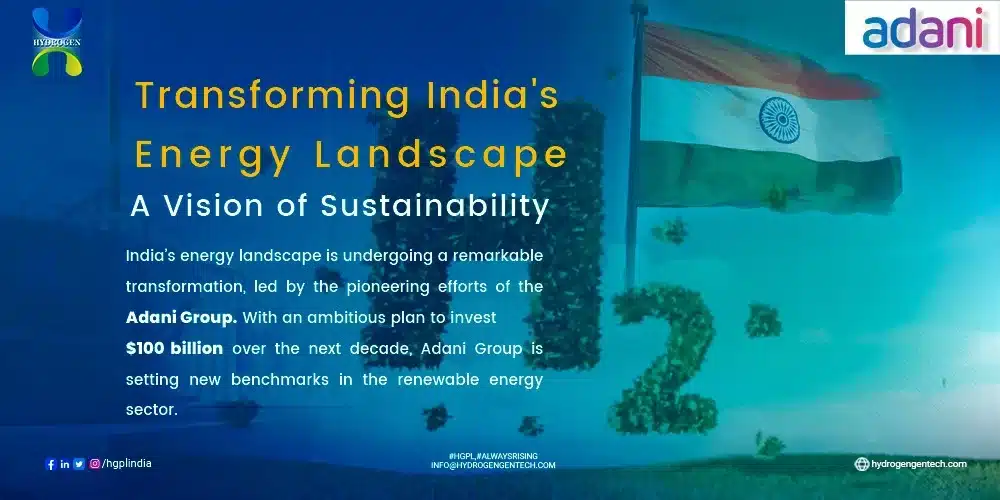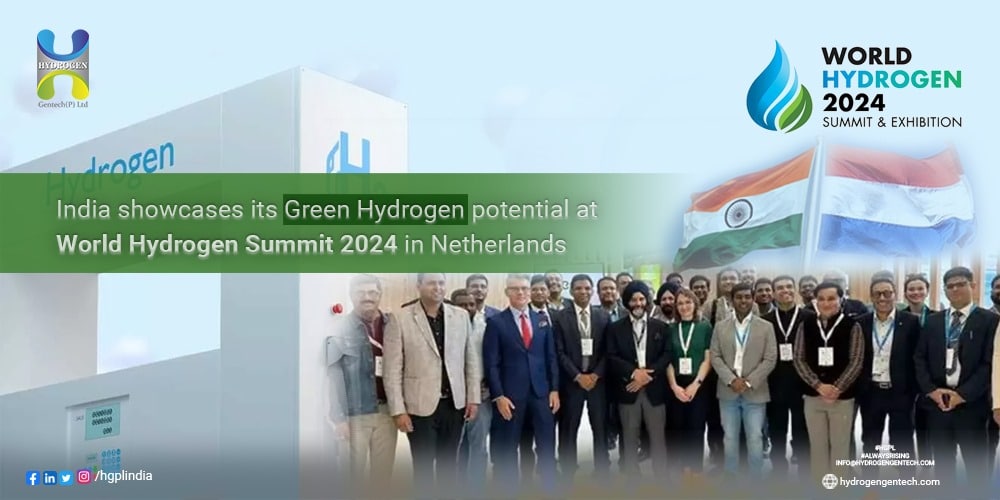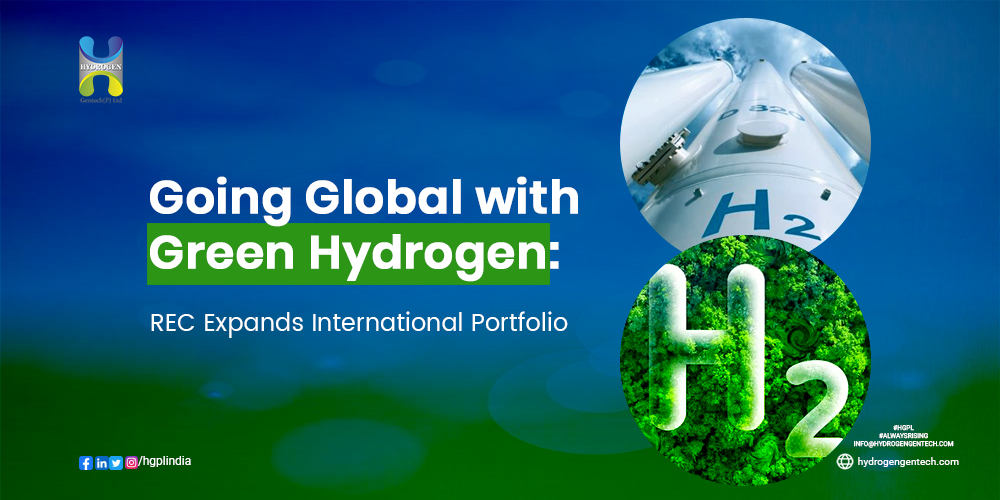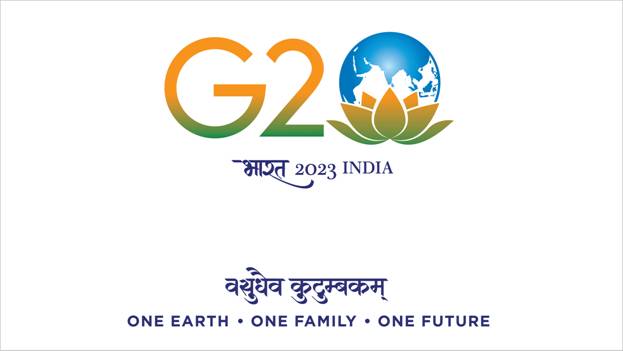The recent Global Renewable Energy Meet held in Gandhinagar put India’s green hydrogen ambitions in the spotlight. As world leaders and industry experts converged at the event, hydrogen-related discussions and announcements became the highlight of the expo, underscoring India’s evolving role in the global green energy landscape.
With Prime Minister Narendra Modi inaugurating the event, the message was clear: India is committed to becoming a global leader in green energy, and hydrogen, particularly green hydrogen, is at the core of this transition.
Key Hydrogen-Related Announcements and Discussions
Green Hydrogen as the Future of India’s Energy Security
At the Global Renewable Energy Meet, green hydrogen took center stage as the potential fuel of the future. One of the key themes across the discussions was how hydrogen can decarbonize industries that are traditionally difficult to transition, such as steel, cement, and chemical manufacturing. India’s focus is on making green hydrogen the backbone of its energy security plan, ensuring long-term sustainability while reducing its dependence on fossil fuels.
Prime Minister Modi and other leaders at the meet stressed the urgency of scaling green hydrogen production. India’s hydrogen strategy is primarily based on leveraging the country’s abundant solar resources to produce green hydrogen using electrolysis, a method that splits water molecules using renewable electricity. By capitalizing on its natural advantages, India aims to drastically reduce hydrogen production costs and become a global hydrogen hub.
Hardeep Singh Puri: 5 Million Tonnes of Green Hydrogen by 2030
Union Minister of Petroleum and Natural Gas, Hardeep Singh Puri, laid out an ambitious target during his address, announcing that India aims to produce 5 million tonnes of green hydrogen annually by 2030. This milestone is part of India’s broader National Hydrogen Mission, which is expected to receive significant investments to establish India as a major player in the global hydrogen market.
Puri emphasized the importance of hydrogen in India’s future energy mix, especially in sectors such as transportation, where hydrogen fuel cells could play a transformative role. The government has already put in place incentives and policy frameworks to attract both domestic and foreign investments in green hydrogen. Key incentives include production-linked incentives (PLI) for hydrogen electrolyzers and reduced taxes on hydrogen-based projects.
By investing in hydrogen infrastructure, the Indian government also aims to create a robust supply chain, covering production, storage, and distribution, which will ensure long-term energy security while simultaneously meeting the country’s net-zero emission goals by 2070.
Hydrogen Economy: Driving Job Creation and Industrial Growth
Beyond energy security, Puri also pointed out the socio-economic benefits that the hydrogen sector could bring to India. The rapid scaling of hydrogen production, storage, and distribution will potentially create thousands of new green jobs across the value chain.
These jobs will span areas such as manufacturing hydrogen fuel cells, operating hydrogen refueling stations, and producing hydrogen via renewable energy. In turn, this will contribute to the country’s industrial growth and economic development, especially in regions that need investment in clean technologies.
Green Hydrogen Corridors and Infrastructure Expansion
One of the significant announcements during the meet was the government’s plans to establish Green Hydrogen Corridors, similar to those already seen in Europe. These corridors will act as high-capacity infrastructure networks, designed to streamline hydrogen production, storage, and transportation across various states and regions.
This initiative is expected to facilitate the large-scale adoption of hydrogen in industries and transportation, enabling long-haul hydrogen-powered trucks and hydrogen refueling stations for public and private use. Such developments will ensure the scalability of hydrogen as a viable energy source across the country.
Startup Ecosystem to Accelerate Hydrogen Innovation
Union Minister for New & Renewable Energy, Pralhad Joshi, made a critical announcement regarding India’s 2nd International Conference on Green Hydrogen (ICGH-2024), to be held next year. Joshi emphasized the importance of engaging startups and young innovators in this green hydrogen revolution.
He pointed out that startups will play a pivotal role in solving some of the technological challenges that remain in the hydrogen sector, such as reducing the cost of electrolyzers, increasing hydrogen storage efficiency, and improving the scalability of hydrogen refueling stations.
Startups are being encouraged to work in collaboration with research institutions and global players to drive innovation and develop cost-effective hydrogen solutions. This focus on innovation is expected to lower the production cost of green hydrogen in the coming years, making it more competitive with traditional fossil fuels.
Green Hydrogen Financing: New Opportunities
Another important focus area during the meet was innovative financing solutions for green hydrogen projects. With substantial investment requirements for infrastructure and technology development, the conference highlighted how public-private partnerships (PPPs) and blended financing models could unlock funding for large-scale hydrogen projects.
The discussions stressed that financial institutions and green funds will have a key role in financing hydrogen initiatives, especially in the early stages, when the risk is high, but the return is uncertain. Global investors, including delegations from the UAE, USA, and Europe, expressed their interest in participating in India’s hydrogen market, offering both financial backing and technological support.
Export Opportunities for Green Hydrogen
India’s ambitious green hydrogen strategy also includes a plan to export hydrogen to markets in Europe, Japan, and South Korea, where demand for clean fuels is growing rapidly. By becoming a net exporter of green hydrogen, India could secure its place as a leading player in the global hydrogen economy, with major trade partnerships already in discussion during the meet.
Conclusion
The Global Renewable Energy Meet in Gandhinagar was a significant milestone in advancing India’s hydrogen ambitions. With strong government support, an enabling policy environment, and a growing ecosystem of innovators and investors, India is set to be a global leader in green hydrogen production and utilization.
Hydrogen is not just an energy solution for India; it is an opportunity to reshape the country’s energy landscape, reduce emissions, create jobs, and boost economic growth while contributing to the global effort to combat climate change. The announcements and discussions at this event signal a promising future for India’s hydrogen sector, one that will pave the way for a more sustainable and energy-secure world.



